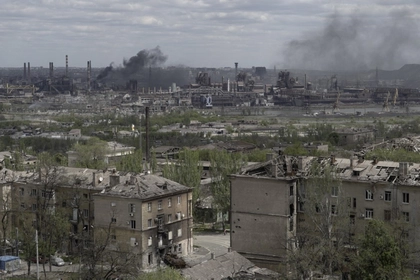The Kremlin has forced Russian banks to provide preferential loans to uncreditworthy war-related businesses, provoking a 71% expansion in corporate debt which drives interest rates, inflation, and a potential bailout crisis.
Russia’s central bank policy can no longer influence the surge despite increasing interest rates to more than 20% to combat 8.9% inflation, according to an executive summary from a “Russia’s Hidden War Debt” report, published by Harvard’s Davis Center for Russian and Eurasian Studies Associate Craig Kennedy on Substack.
JOIN US ON TELEGRAM
Follow our coverage of the war on the @Kyivpost_official.
Several international commentators who have analyzed direct war spending from Russia’s budget overlooked the $210 to $250 billion of the surge in compulsory, preferential bank loans to defense contractors, Kennedy wrote.
He called this an “off-budget financing scheme” for the war against Ukraine.
“This off-budget funding stream is authorized under a new law, quietly enacted on Feb. 25, 2022, that empowers the state to compel Russian banks to extend preferential loans to war-related businesses on terms set by the state,” he wrote.
Since mid-2022, Russia has experienced an anomalous 71% expansion in corporate debt, valued at $415 billion equivalent to around 19.4% of GDP, the report says. A total 70% of the corporate credit surge went to sectors engaged in war-related activity.

Russiaʼs War Caused $170B in Infrastructure Damage to Ukraine
The report also estimated the corporate credit surge significantly exceeds both total oil and gas revenues and defense budget expenditures over the same period and is 6.5 times larger than incremental government borrowing.

The authors derive their conclusions from data provided by the Russian central bank and Russia’s Ministry of Finance.
The preferential loans are provided to “to largely uncreditworthy, war-related businesses,” Kennedy wrote, without stating specific details on clients’ portfolios or exact data about the borrowers.
Why defense preferential loans became a problem in Russia
Russia’s central bank stated preferential defense loans have been largely “insensitive” to interest rate hikes, blunting its main tool for combatting inflation, Kennedy wrote.

“High borrowing costs are causing financial distress among otherwise healthy companies in the “real” economy, leading the central bank to voice concerns over “the risk of major companies becoming overindebted.”
These at-risk companies likely include Gazprom, which has been borrowing heavily in Russia’s domestic markets at 22% and higher to cover losses from the collapse of its core business – European exports,” Kennedy wrote.
Weak-credit businesses may struggle to service their loans, creating a ticking bomb for the whole of Russia’s economy if the become unable to repay loans. When they do, there may be a need for a crisis strategy such as declaring bankruptcy or asking for a bailout – this poses a risk for the whole of its financial sector.
“Unlike the slow-burn risk of inflation, credit event risk – such as corporate and bank bailouts – is seismic in nature: it has the potential to materialize suddenly, unpredictably and with significant disruptive force,” Kennedy wrote.
Direct spending and preferential loans are not the only sources for Russia’s war
Russia’s military expenditure is significantly higher than reflected in the federal budget, Andrii Nesteruk, Strategy chief at Finteum, wrote on Facebook.
Financing the war through banks is only one method, but Craig Kennedy did not account for all the “hidden” military expenses, Nesteruk wrote.
Russia also funds its war through its National Wealth Fund (NWF), civilian budget programs, local budgets and the federal budget, funds from Russia’s state-owned enterprises, oligarchs’ personal funds, revenues from resources extracted in Africa, and other opaque sources, he wrote, noting the room for growth from these funding sources is also shrinking.
“What’s most infuriating is that some reputable economists, analysts, journalists, and politicians cite these official figures for Russia’s military expenditures as God’s truth without any disclaimers. They analyze them at face value without any caveats,” Nesteruk wrote.
Official data can also undergo falsification. Russia’s inflation may be twice as high as its official figures, Ilya Neskhodovskyi an economics expert at the Non-Governmental Organization “National Interest Advocacy Network “ANTS” wrote in an article.
You can also highlight the text and press Ctrl + Enter











